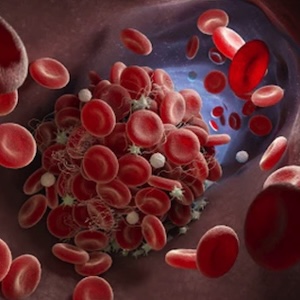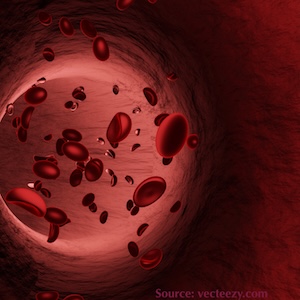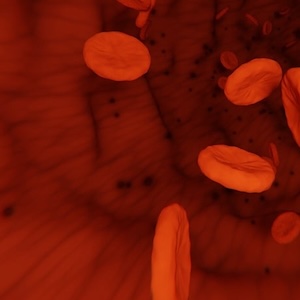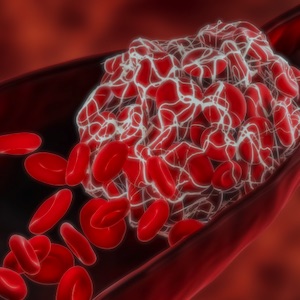Reviews
Vol. 4 No. 2 (2025)
The evolution of hemostasis genetics: from monogenic disorders to complex traits. A historical perspective

Publisher's note
All claims expressed in this article are solely those of the authors and do not necessarily represent those of their affiliated organizations, or those of the publisher, the editors and the reviewers. Any product that may be evaluated in this article or claim that may be made by its manufacturer is not guaranteed or endorsed by the publisher.
All claims expressed in this article are solely those of the authors and do not necessarily represent those of their affiliated organizations, or those of the publisher, the editors and the reviewers. Any product that may be evaluated in this article or claim that may be made by its manufacturer is not guaranteed or endorsed by the publisher.
Published: 1 July 2025
930
Views
172
Downloads
Similar Articles
- Roger Lijnen, Désiré Collen, The key to fibrinolysis and thrombolysis , Bleeding, Thrombosis and Vascular Biology: Vol. 4 No. 3 (2025)
- Paolo Simioni, Vittorio Pengo, Paolo Prandoni, Thrombosis and hemostasis at the University of Padua: a reappraisal on the occasion of its 800th year of history , Bleeding, Thrombosis and Vascular Biology: Vol. 1 No. 3 (2022)
- PO47 | Hemophilia A and antithrombin deficiency: a case of natural hemostatic rebalancing , Bleeding, Thrombosis and Vascular Biology: Vol. 4 No. s1 (2025)
- Daniela Poli, Emilia Antonucci, Gualtiero Palareti, Roberto Facchinetti, Pietro Falco, Giuseppina Serricchio, Teresa Lerede, Lucilla Masciocco, Paolo Gresele, Sophie Testa, Major bleedings in mechanical prosthetic heart valves patients on Vitamin K antagonist treatment. Data from the PLECTRUM Study , Bleeding, Thrombosis and Vascular Biology: Vol. 1 No. 2 (2022)
- Luca Puccetti, Vincenzo Sammartano, Federico Caroni, Margherita Malchiodi, Paola Calzoni, Eleonora Franceschini, Lucrezia Galasso, Monica Bocchia, Safety of COVID-19 mRNA vaccination in patients with history of acquired hemophilia A: a case series , Bleeding, Thrombosis and Vascular Biology: Vol. 1 No. 3 (2022)
- PO42 | Acquired Von Willebrad syndrome in patients with myeloproliferative syndrome: literature review and single-center experience , Bleeding, Thrombosis and Vascular Biology: Vol. 4 No. s1 (2025)
- PO44 | Emicizumab in acquired haemophilia A , Bleeding, Thrombosis and Vascular Biology: Vol. 4 No. s1 (2025)
- CO47 | Genetic characterization of the KIV2 LPA polymorphism in subjects with bicuspid aortic valve with different clinical complications , Bleeding, Thrombosis and Vascular Biology: Vol. 4 No. s1 (2025)
- PO79 | Trying to hit the hit in the shadow of renal failure: a complex case managed with danaparoid , Bleeding, Thrombosis and Vascular Biology: Vol. 4 No. s1 (2025)
- CO02 | Hepatic fibrosis as predictor of cancer-associated thrombosis in patients with intrahepatic cholangiocarcinoma , Bleeding, Thrombosis and Vascular Biology: Vol. 4 No. s1 (2025)
1-10 of 106
Next
You may also start an advanced similarity search for this article.
Most read articles by the same author(s)
- Augusto Di Castelnuovo, Licia Iacoviello, Moving beyond p-value , Bleeding, Thrombosis and Vascular Biology: Vol. 1 No. 1 (2022)
- Benedetta Izzi, Simona Costanzo, Alessandro Gialluisi, Amalia De Curtis, Sara Magnacca, Teresa Panzera, Augusto Di Castelnuovo, Maria Benedetta Donati, Chiara Cerletti, Marc F. Hoylaerts, Giovanni de Gaetano, Licia Iacoviello, *on behalf of the Moli-sani Study Investigators, Platelet distribution width is associated with cardiovascular mortality in an adult general population , Bleeding, Thrombosis and Vascular Biology: Vol. 2 No. 3 (2023)
- Roberta Parisi, Simona Costanzo, Romy de Laat-Kremers, Augusto Di Castelnuovo, Amalia De Curtis, Teresa Panzera, Mariarosaria Persichillo, Chiara Cerletti, Giovanni de Gaetano, Maria Benedetta Donati, Licia Iacoviello, Bas de Laat , for the Moli-sani Study Investigators, Plasma fibrinogen levels and all-cause and cause-specific mortality in an Italian adult population: results from the Moli-sani study , Bleeding, Thrombosis and Vascular Biology: Vol. 2 No. 1 (2023)
- Giovanni de Gaetano, Chiara Cerletti, Augusto Di Castelnuovo, On the impact of generative artificial intelligence on peer review , Bleeding, Thrombosis and Vascular Biology: Vol. 4 No. 1 (2025)










